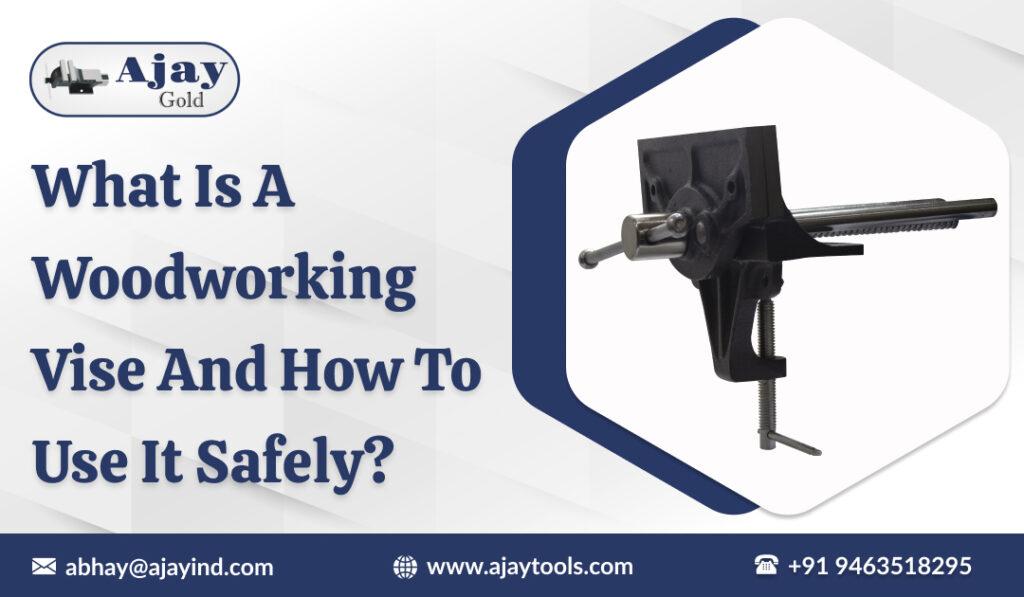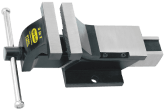To perform various operations like cutting, drilling, or carpentry, a woodworking vise is used. They are used to secure wood pieces to perform a specific task. Nowadays, these vises are made of metal, and many traditional vices are made of wood to prevent damage. Its jaws will open and close to secure the object on which the task is being performed. To know more about this type of vise along with its uses, keep reading this blog.
What Are Woodworking Vises Used for?
A woodworking vice is specially designed to secure wood pieces without damaging the surface. Wood often needs to be held when performing tasks, such as drilling, sawing, or other carpentry tasks. Some models of woodworking bench vise are designed to be permanently fixed onto the workbench. They are usually joined underneath the workbench with the top edge of the jaws’ level with the workbench’s surface.
They are attached in such a way as to hold the objects in a low position to perform operations such as sawing and drilling easily. The surface of the bench is usually at the right working height for workers, the vise is also in the optimum working position. If you have a vice in such a position, it will help you keep the workbench’s surface clear for workers to complete their tasks. One of the best things about bench vises for woodworking that makes them ideal for wood clamping is the flat surface of their jaws. The flat surfaces of the jaws of the vise avoid damaging wood when clamped.
What are the Different Parts of Woodworking Vice?
The following are some important parts of woodworking vice that you must know if you are working with it:
- HandleThe purpose of using the vise handle is to turn it to open or close the jaws. It consists of thick nuts on either end, so the handle doesn’t slip when you turn it. The handle is also called the tommy bar.
- JawsIt has a stationary jaw and a sliding jaw. Usually, these jaws are made of metal, but some woodworking bench vice manufacturers make jaws of wood. These jaws are flat to avoid damaging the wood when clamping it.
- ScrewThe screw is one of the most important parts of the vice that is in control of closing and opening of jaws of the vise. The screw length is used to determine how wide the vice jaws can be opened. The screw body is threaded to provide high strength and easy use facility. This thread form enables the usage of split-nut that is efficient for manufacturing vises with a quick-release mechanism.
- Guide BarsThe guide bars are secured in place by the body of the vise and operate by supporting the screw, and it also prevents it from damage by securing or holding the sliding jaw’s weight.
- Mounting BracketsThe mounting bracket is considered the main body of the vise that joins the tool with the workbench. It is shaped in such a manner to level the bolt with the underneath of a bench.
How to Use a Woodworking Bench Vice Safely?
There are different types of woodworking bench vises available on the market. The following are a few steps for using this type of vice:
- Before you use it, make sure the vise is properly mounted onto the workbench.
- To open the jaw of the vise, turn the handle in the anti-clockwise direction. Keep turning the handle until you get the required jaw width to fit the workpiece.
- Place the object on which you want to perform a specific task.
- By rotating the handle in a clockwise direction, you can close the vice jaw.
- Now, you can perform the required tasks on the workpiece.
Conclusion
When you use any type of vise, you need to use it safely to prevent damage. Thus, if you are not sure how to use it, then you must read about it. After reading the blog, now, you may have an idea of different parts of wood bench vice along with tips for using them effectively. If you want to buy a woodworking vise for your workshop, you can contact Ajay Tools, which is a leading hand tools manufacturing industry.


